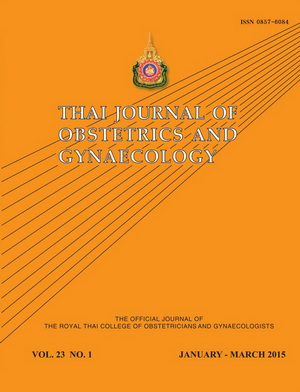A Risk Score for Predicting Postpartum Hemorrhage in Association with Cesarean Delivery
Main Article Content
Abstract
Objective: To determine the prevalence of postpartum hemorrhage (PPH) in association with cesarean delivery and to develop a risk score for predicting PPH in women who underwent cesarean delivery based on clinical characteristics.
Materials and Methods: A retrospective study was conducted on 2405 pregnant women who underwent cesarean delivery in our institution between September 2011 and December 2013. Clinical data were collected from medical records. The potential risk factors of PPH were determined by multivariable logistic regression. Risk score was constructed according to the coefficient of each significant variable in the regression model.
Results: The prevalence of PPH in cesarean delivery was 10.1%. According to the multivariable analysis, advanced maternal age, race (other Asian nations), multiparity, placenta previa, emergency cesarean delivery, fetal macrosomia, and abnormal second stage of labor were significantly associated with PPH in cesarean delivery. These seven factors were incorporated into a risk score which produced a sensitivity of 60.2% and specificity of 18.1% at the optimal cutoff score of ≥ 3.
Conclusion : PPH is prevalent in women undergoing cesarean delivery. A risk score based on clinical characteristics might be a useful tool for predicting PPH in cesarean delivery.


